Results 4,781 to 4,790 of 12094
Thread: Anandtech News
-
03-01-15, 12:00 PM #4781
Anandtech: Samsung Announces the Galaxy S 6 and S 6 Edge
In recent times, Samsung has seen the erosion of their dominance in the Android ecosystem. The reasons for why this is are many, but at least some of the criticism has been focused on the products themselves. At the high end, many criticisms have been leveled at the industrial and material design of Galaxy S and Note devices, and outside of the hardware itself, TouchWiz has received a great deal of criticism for performance issues and poor design. This brings us to the Galaxy S 6 and S 6 edge, which represents a fundamental shift in the way Samsung approaches the way their phones are made and designed. While we’ve seen these changes in the form of the Galaxy A line and the Galaxy Note 4, the Galaxy S6 represents the first phone that has been made from the ground up with a focus on industrial and material design.
This focus on design is immediately apparent as the Galaxy S 6 is the first Galaxy S phone with a unibody design. There are no visible seams or screws, and there is no apparent gap between the glass back and the metal frame of the phone. In person, the design of the Galaxy S 6 is really quite shocking when compared to the Galaxy S 5 or any previous Galaxy S device. It seems that there has been a great deal of thought and care put into each aspect of the device. The metal frame is far from a simple curve, and is somewhat rounded along the top and bottom, but flattens out along the sides for better grip. The edges of the frame are slightly chamfered as well, in order to make edge swipes off of the display smooth and natural. The display is centered on the device, with symmetrical top and bottom bezels, and thin side bezels. The back cover is clean, with a glass back that has little in the way of distractions outside of the camera, LED flash module, and a Samsung logo. Overall, the Galaxy S6 has been a massive departure from everything else that has come before it.
While the design is one aspect of the Galaxy S 6, the specs are another. While it’s often popular to repeat that specs don’t matter, they represent the foundation for the entire user experience. To start, we’ve placed the usual spec sheet below to get the basics down.
As one can see, there are a few key highlights of note in the Galaxy S 6. The Exynos 7420 SoC is the first SoC to be built on Samsung’s 14nm FinFET process. While this isn’t comparable to Intel’s 14nm process due to the use of a 20nm metal interconnect, there are some density improvements in areas that aren’t gated by interconnect pitch. While transistors are an area where we can see significant improvements to clock speed and power consumption, the metal interconnects can influence performance as well due to power dissipated by resistance in the interconnects, in addition to limitations on clock speed due to RC delay. This means that Intel continues to hold a significant process lead, as reducing interconnect pitch is exponentially more difficult past the 20nm node as resistance and capacitance issues increase dramatically. Overall, this move to 14nm should dramatically reduce power consumption as the effect of leakage is nearly eliminated.Samsung Galaxy S5 Samsung Galaxy S6 Samsung Galaxy S6 Edge SoC MSM8974ACv3 2.45 GHz Snapdragon 801 Exynos 7420 2.1/1.5GHz A57/A53 Exynos 7420 2.1/1.5GHz A57/A53 RAM/NAND 2GB LPDDR3
16/32GB NAND + microSD3GB LPDDR4
32/64/128GB NAND3GB LPDDR4
32/64/128GB NANDDisplay 5.1” 1080p SAMOLED HD 5.1” 1440p SAMOLED 5.1” 1440p SAMOLED, Dual Edge Network 2G / 3G / 4G LTE (Qualcomm MDM9x25 UE Category 4 LTE) 2G / 3G / 4G LTE (Category 6 LTE) 2G / 3G / 4G LTE (Category 6 LTE) Dimensions 142 x 72.5 x 8.1 mm, 145 grams 143.4 x 70.5 x 6.8mm max, 138 grams 142.1 x 70.1 x 7.0mm max, 132 grams Camera 16MP (5132 x 2988) Rear Facing with 1.12 µm pixels, 1/2.6" CMOS size, 31 mm (35mm effective), f/2.2
2MP Front Facing16MP (5132 x 2988) Rear Facing w/ OIS, f/1.9, object tracking AF
5MP Front Facing, f/1.916MP (5132 x 2988) Rear Facing w/ OIS, f/1.9, object tracking AF
5MP Front Facing, f/1.9Battery 2800 mAh (10.78 Whr) 2550 mAh (9.81 Whr) 2600 mAh (10.01 Whr) OS Android 4.4 w/TouchWiz Android 5 (64-bit) w/TouchWiz Android 5 (64-bit) w/TouchWiz Connectivity 802.11a/b/g/n/ac 2x2 + BT 4.0, USB3.0, GPS/GNSS, MHL, DLNA, NFC 2x2 802.11a/b/g/n/ac + BT 4.1, USB2.0, GPS/GNSS, NFC 2x2 802.11a/b/g/n/ac + BT 4.1, USB2.0, GPS/GNSS, NFC Wireless Charging N/A WPC 1.1 (4.6W) & PMA 1.0 (4.2W) WPC 1.1 (4.6W) & PMA 1.0 (4.2W) Fingerprint Sensor Swipe Touch Touch SIM Size MicroSIM NanoSIM NanoSIM
Outside of process node, the Exynos 7420 is a rather standard big.LITTLE SoC, with four Cortex A57s at 2.1 GHz and four Cortex A53s at 1.5 GHz. However, the Exynos 7420 represents the first Exynos SoC to have full AArch64 support in software, unlike the Exynos 5433. The SoC supports LPDRR4 and Samsung has equipped the Galaxy S6 with a UFS 2.0 storage solution. It remains to be seen whether this is a major point of differentiation this year, but in practice it seems that the Galaxy S 6 was smooth. Areas like the multitasking interface were noticeably faster to open and close, but there were still some scenarios where I saw some slight frame drops which is likely due to the pre-release software.
Another major area of focus for Samsung for the S6 was refining the camera. While the sensor remains the same Sony sensor that we saw in the Galaxy Note 4, Samsung has improved the optics to have a maximum aperture size of f/1.9 compared to the f/2.2 that we saw with the Galaxy S5 in addition to an IR sensor in order to improve white balance detection. OIS is also introduced to the Galaxy S lineup for this generation, and in practice the stabilization is as effective as the Galaxy Note 4. Samsung strongly prioritized shooting speed and general camera speed with this generation, as they introduced object tracking AF, a double tap camera gesture, and further refinement of the PDAF system in order to make the camera experience much better than before. The object tracking AF is similar to what we've seen on phones like the Huawei Ascend Mate 7 before, but double-tapping the home button to wake up the camera was almost instant compared to pretty much any other method I've seen before. The long start-up time that I saw with the Galaxy S5's camera application has also disappeared for the most part, and in general places like the gallery and camera application are much faster than before. The front-facing camera is also a 5MP camera, which represents an upgrade over the Galaxy Note 4 but shares a f/1.9 aperture. Unfortunately, I was unable to really test the camera at all but it should be at reasonable improvement over the Galaxy Note 4's camera.
For the S6 Samsung has also improved on the AMOLED display, both in quality and pixel density/resolution. Although we have relatively little detail on this, Samsung claims 600 nit luminance, up from their claimed 500 nits from the Galaxy S5. In addition, Samsung has included wireless charging support for both WPC1.1 and PMA 1.0 standards built into every Galaxy S6. The new fingerprint sensor is also amazing in comparison the experience with the Galaxy S5, and works about as well as Apple's TouchID system. Samsung is bundling this with Samsung Pay, which allows for payments with the fingerprint sensor for authentication and while not available at launch, Samsung will also support legacy magstripe terminals for mobile payments on the Galaxy S6. Samsung has also improved the speaker dramatically from the Galaxy S5, and it should have significantly improved sound quality and volume, in addition to the improved placement on the bottom of the phone. TouchWiz seems to remain relatively similar in design, but there's a big reduction in the number of pre-installed applications. There are some applications preinstalled by Microsoft such as OneNote, OneDrive, and Skype, but in general there's almost no bloat to speak of.
Overall, the Galaxy S6 seems to be quite promising. Although the design seems to be somewhat inspired by other devices on the market, the industrial and material design is a massive step forward from everything else we've seen from Samsung before. In general, it seems that Samsung has managed to put together a device that can truly compete with devices like the One M9 and iPhone 6 in every aspect, although it'll take a full review to really get a good idea for how it shapes up against the competition. The Samsung Galaxy S6 and S6 edge will be available globally starting April 10th with 32, 64, and 128 GB storage SKUs. The Galaxy S6 and S6 edge will both have white, black, and gold colors available, but the blue color will be limited to the Galaxy S6 and the emerald green will be limited to the Galaxy S6 Edge.
Gallery: Samsung Galaxy 6





More...
-
-
03-01-15, 05:00 PM #4783
Anandtech: HP Releases The Spectre x360 Convertible Laptop
2015 has been a good year for laptops. We have seen some amazing new designs already, and had the chance to review several of them so far, with more upcoming. HP, even though they are one of the largest PC makers on the planet, is slowly reinventing itself. We have seen their Stream laptops and tablets already, which are a great take on the low end of the market, and now HP has a new offering to go after the premium laptop market. The Spectre x360 is a 13.3 inch laptop, with a CNC aluminum chassis, and a Yoga style hinge to make it as versatile as we already know the Yoga laptop can be.
HP worked closely with Microsoft on the implementation of the x360, and they have included a lot of tweaks and technologies to improve battery life. First, the battery size is good. The x360 has a 56 Wh battery inside, edging out the Dell XPS 13’s 52 Wh battery and the Yoga 3 Pro’s 44 Wh power pack. The QHD (2560x1440) display also features Panel Self-Refresh technology, to let the laptop power down when the display is not changing. And the drivers were tweaked to allow the x360 to deliver up to 12.5 hours of battery life on the FHD model, according to HP.
HP will offer two versions of the display. Both are optically bonded, to increase brightness and bring the pixels closer to the touch digitizer, much like we see on quality tablets. The first display is a Full HD 1920x1080 touch panel, and the upgrade is a 2560x1440 Quad HD model, which works out to 166 Pixels per Inch, and 221 Pixels per Inch respectively. Those who like to use a pen as an input method will be happy to see that HP is offering an active pen as an accessory as well, but at this time we do not know what kind of digitizer it will use.
Powering the new convertible will be the Intel Core i5-5200U and i7-5500U processors, and memory will be 4 to 8 GB. Storage options are all solid state, and options range from 128 GB to 512 GB.
The prices are quite competitive as well, with a starting price of just $900 for the Core i5 model with 4 GB of memory, a 128 GB SSD, and the Full HD touchscreen. To bump up in performance, HP will also be offering a model with a Core i7, 8 GB of memory, and a 256 GB SSD with the Full HD display for $1150, and the top end model will have the Core i7, 8 GB of memory, 512 GB SSD, and the Quad HD touchscreen for $1400.HP Spectre x360 Specifications Processor Intel Core i5-5200U
(Dual-core + HT 2.2-2.7GHz 3MB L3 14nm 15W TDP)
Intel Core i7-5500U
(Dual-core + HT 2.4-3.0GHz, 4MB L3, 14nm, 15W TDP)Chipset Broadwell-ULT Memory 4 GB DDR3
8 GB DDR3Graphics Intel HD 5500
(24 EUs at 300-900MHz on Core i5)
(24 EUs at 300-950MHz on Core i7)Display 13.3" IPS 16:9 FHD (1920x1080) Touchscreen
13.3" IPS 16:9 QHD (2560x1440) TouchscreenStorage 128GB/256GB/512GB SSD Networking Intel Dual Band Wireless-AC 7265 plus Bluetooth 4.0
(2x2:2 802.11ac 867Mbps capable)Battery/Power 56Wh non-removable
45W Max AC AdapterOperating System Windows 8.1 64-bit
Windows 8.1 Pro 64-bitDimensions 12.79" x 8.6" x 0.63" (WxDxH)
(325mm x 218mm x 15.9mm)Weight 3.26 lbs (1.48kg) Extras FHD Webcam
3 x USB 3.0
HDMI Port
DisplayPort 1.2
Backlit KeyboardColors Silver Pricing $900 (i5, 4GB, 128 GB, FHD)
$1150 (i7, 8GB, 256GB, FHD)
$1400 (i7, 8GB, 512GB, QHD)
The Spectre x360 goes on sale today at HP.com, and will be available at Best Buy starting on March 15th.
Source: HP
More...
-
03-02-15, 12:30 AM #4784
Anandtech: Sony Announces the Xperia Z4 Tablet
Although much of the focus on Sony's work in the mobile space is on their smartphones, they have been a player in the tablet segment of the market for quite some time. In fact, Sony has been responsible for some of the more unique tablet designs, such as the Sony Tablet P which had two displays and folded much like a Nintendo DS.
When focusing on what we traditionally think of as a tablet, one will see that the flagship device in Sony's lineup has always been their 10.1" tablet offering. These devices are usually named in the same "Xperia Z" format as Sony's flagship smartphones, and although the tablet released last year was the Xperia Z2 Tablet, the release of the Xperia Z3 Compact Tablet late last year means that this year's release moves ahead to Z4. The Xperia Z4 tablet is Sony's flagship tablet, and the first of 2015's high end Android tablets. To give an overview of the Z4 Tablet on paper, I've laid out its core specifications below.
Inside the Xperia Z4 Tablet we have Qualcomm's Snapdragon 810 SoC, which has four Cortex-A57 cores and four Cortex-A53 cores running at 2.0GHz and 1.6GHz respectively, along with Qualcomm's new Adreno 430 GPU. The internal battery remains the same capacity as the Z2 Tablet at 6000mAh (22.8Wh), but the tablet has been slimmed down to 6.1mm which puts it on par with Apple's iPad Air 2.Sony Xperia Tablet Z2 Sony Xperia Tablet Z4SoC 2.3GHz Snapdragon 801 (APQ8074AB) with 4 x Krait 400 + Adreno 330 Snapdragon 810 with 4 x Cortex-A57 at 2.0GHz and 4 x Cortex-A53 at 1.6GHz + Adreno 430 RAM/NAND 3GB LPDDR3 + 16/32GB NAND + MicroSD 32GB NAND Display 10.1" 1920x1200 LCD 10.1" 2560x1440 LCD Network WiFi only or 2G / 3G / 4G LTE SKU WiFi only or 2G / 3G / 4G LTE SKU Dimensions 266 x 172 x 6.4 mm, 426g ? x ? x 6.1mm thick, 389g WiFi, 393g LTE Camera 13MP Rear Facing with F/2.0 aperture and OIS, 2MP FFC
4K video recording8MP Rear Facing, 5MP Front Facing Battery 6000 mAh (22.8 Whr) 6000 mAh (22.8 Whr) OS Android 4.4.2 KitKat Android 5.0 Lollipop Connectivity 2x2 802.11a/b/g/n/ac + BT 4.0, USB2.0, GPS/GNSS, MHL, NFC ?
Moving to the outside of the tablet, we see that Sony has placed an 8MP camera on the rear, and a 5.1MP camera on the front. The front of the device is also home to the 10.1" 2560x1440 LCD display. Like many of Sony's recent devices, the Z4 Tablet is both dust and water resistant. It has an IP68 rating for which Sony specifies an immersion depth of up to 1.5 meters for up to thirty minutes, which goes a bit beyond the typical 1 meter for 30 minutes IP67 rating on many other mobile devices
According to Sony, the Xperia Z4 Tablet will be launching globally in June. It will come in both WiFi and LTE variants, with pricing yet to be revealed.
Source: Sony
More...
-
03-02-15, 12:30 AM #4785
Anandtech: SanDisk Announces iNAND 7132: SLC/TLC Hybrid eMMC
In general, storage performance has been an area that is only discussed when it becomes a bottleneck. There was very little focus on storage performance in general before devices like the original Nexus 7 started experiencing severe performance issues due to IO pauses. However, delivering high performance storage performance has generally limited storage SKUs to 32GB or less, as the cost of such storage is generally difficult to justify otherwise.
This is a problem that SanDisk hopes to solve with their new iNAND 7132, which uses a hybrid SLC/TLC architecture to deliver both high burst performance and cheaper storage for a given design. SanDisk claims that typical storage usage is extremely peaky in nature, even with seemingly contiguous data streams. In addition, relatively few cases can truly saturate modern eMMC on a smartphone even when using a TLC-based solution. By integrating an SLC cache into the eMMC package, it’s possible to achieve peak sequential reads of up to 280 MB/s, sequential writes of up to 125 MB/s, and up to 2800 and 3300 IOPS for random writes and reads, respectively. Based upon our discussions with SanDisk, it seems that the SLC cache is generally less than a gigabyte, but is usually enough to avoid situations where the SLC cache is filled and writes must go to the TLC storage. SanDisk has also implemented a great deal of error correction and extensively tested this storage solution, and claims that eMMC solution can last 10 years of 24/7 intense use without data loss. The iNAND 7132 eMMC 5.0 solution is currently available in 16, 32, and 64 GB variants, with a 128GB variant arriving mid-year.
More...
-
03-02-15, 01:30 AM #4786
Anandtech: Audience Announces NUE N100 Multisensor Processor
While Audience is traditionally focused on voice products, today they’re attempting to make their first moves into combined voice recognition and sensor hub products that leverage sensor fusion and neural networks. The NUE N100 is the first of this line of products, which is able to do keyword recognition and can keep the main CPU from waking until a command is received and registered. Audience focused on emphasizing how their solution eliminates the need for additional waiting once the initial wakeup occurs as it can cache the spoken command and feed it into a given system like Google voice actions. In addition, this solution is said to have reduced false wakeup rate, which means that there is far less power wasted on unintended activation. Audience’s solution can cache up to 5 key words, and can accurately distinguish between different people due to their use of neural network-based solutions, and can be programmed either by the end user or the OEM.
Outside of this VoiceQ system, Audience is also introducing MotionQ, which are contextual motion systems. In its current state, using various sensors present on a smartphone or tablet, the motion processing is able to determine whether the device is in a pocket, on a desk or in a person’s hand, whether the device is being held in a sitting, standing, walking or running position, and whether the device is in a car, train, bike, or many other contextual scenarios relying on the neural network algorithms as previously mentioned. The N100 also has OSP support, which means that OEMs can take the N100 and implement custom algorithms in addition to the work that Audience has already done. The N100 will be available for sampling in mid-2015, which means that devices shipping with this chip should appear around in 2016.
More...
-
03-02-15, 01:30 AM #4787
Anandtech: Imagination Announces PowerVR G6020 GPU & PowerVR Series 5 Video Encoder
With Mobile World Congress 2015 now in full swing, Imagination Technologies is taking to the show today to announce a couple of new additions to the PowerVR family of video products.
First off is a new low-end GPU in the PowerVR Series6XE family, the G6020. The G6020 is aimed at entry-level mobile devices, embedded computers, and high-end wearables, and is intended to be Imagination’s new entry-level Series6XE part.
From a design perspective, the G6020 is aimed at very simple desktop workloads – the Android UI, wearable interfaces, etc. Imagination has essentially built the bare minimum GPU needed to drive a 720p60 display, taking out any hardware not necessary to that goal such as compute and quite a bit of geometry throughput. What remains is enough of a ROP backend (pixel co-processor) to drive 720p, and the FP16 shading resources to go with it.
Meanwhile from a hardware perspective this is basically a significantly cut down 6XE part. G6020 drops to just a single 4 pipeline USC, versus the 8 pipeline USC found in the G6050, and 16 pipelines as found in a “complete” USC. The number of FP32 ALUs in each pipeline has also been reduced, going from the 6XE standard of 2 per pipeline to 1 for G6020, while the number of FP16 ALUs remains unchanged at 4. Along with scaling down the USCs, Imagination has also stripped down the G6020 in other ways, such as by taking out the compute data master.
The end result of their efforts is designed to be an incredibly small and incredibly low power OpenGL ES 3.0 GPU for devices that fall in the cheap/small range. G6020 is only 2.2mm2 in size on 28nm, making it similar in size to ARM’s Cortex-A7 CPU cores (a likely pairing target). And power consumption is low enough that it should be able to just fit into high-end wearables.PowerVR Series6/6XE "Rogue" GPU # of Clusters # of FP32 Ops # of FP16 Ops Optimization G6020 0.25 8 32 Area + Bandwidth G6050 0.5 32 64 Area G6060 0.5 32 64 Area + Bandwidth G6100 1 64 96 Area G6100 (XE) 1 64 128 Area G6110 1 64 128 Area + Bandwidth
PowerVR Series 5 Video Encoder
Meanwhile Imagination’s second PowerVR announcement of the day is the announcement of their new PowerVR Series 5 family of video encoders. This is Imagination’s entry into the HEVC (H.265) hardware encoder market, offering scalable designs for encoding H.264 and HEVC video.
In terms of designs Imagination will be offering 3 designs, the E5800, E5505, and E5300, targeted at progressively lower-end markets. The E5800 is the largest configuration and is aimed at the prosumer market, offering 4Kp60 encoding with 10-bit color and 4:2:2 chroma sampling (twice the sampling of standard 4:2:0 video). Below that is the E5505, the mainstream/premium mobile part with support for encoding up to 4Kp30, along with VP8 encoding and even MJPEG for certain legacy applications. Finally at the bottom of the list is the E5300, which is a small, low power encoder for 1080p30 applications (cameras/sensors/IoT and the like).
From a competitive standpoint, along with the expected synergy between the PowerVR encoders and PowerVR GPUs –support for directly handing off compressed memory, in particular – Imagination is also banking on being able to win a quality war with other mobile HEVC encoders. By Imagination’s estimates they can offer equivalent quality at just 70% of the bitrate, which would give them a significant advantage. The company says that this is a result of having a newer encoder that is better tuned than competing encoders, and one that implements more HEVC features (e.g. 10-bit color), allowing them to achieve better compression and the resulting reduction in bitrates.PowerVR Series 5 HEVC Encoders Encoder Max Resolution Chroma Subsampling Market E5800 4Kp60 4:2:2 Prosumer/Pro-Cameras E5505 4Kp30 4:2:0 Mobile E5300 1080p30 4:2:0 Sensor/IoT/Security Cameras
While Imagination’s testing methodology and resulting numbers to get here are open to interpretation – PSNR is important, though not the end-all of encoder measurements – HEVC encoders are still a fledgling field. There is still ample opportunity to improve on HEVC encoders and reach the same kind of highly tuned status that H.264 encoders have evolved to.
Wrapping things up, both new PowerVR products are now available for licensing.
More...
-
03-02-15, 03:02 AM #4788
Anandtech: Qualcomm Announces Snapdragon 820 and Zeroth Platform
Today, Qualcomm is announcing the new Zeroth Platform, which is enabled by the Snapdragon 820 SoC.
While Qualcomm is avoiding any real disclosure of the SoC at this point, we do know that the Snapdragon 820 will be built on a FinFET process, which could be either TSMC’s 16nm or Samsung’s 14nm process. In addition to all of the improvements that the move to a new process brings, Qualcomm is finally introducing their custom ARMv8 CPU core, named Kryo. Unfortunately, there are no real details here either, but given that there’s only one architecture named it’s likely that Qualcomm is moving away from big.LITTLE with the Snapdragon 820.
The final detail regarding Snapdragon 820 is that it will begin sampling in the second half of 2015, which should mean that we can expect it to be in devices some time either at the end of 2015 or the beginning of 2016. Ultimately, the fact that Qualcomm has come up with a custom ARMv8 CPU architecture in such a short time continues to show just how quickly Qualcomm can respond to changing market conditions, something that we first saw with the Snapdragon 810.
More...
-
03-02-15, 03:02 AM #4789
Anandtech: Qualcomm Announces Snapdragon Sense ID Fingerprint Scanning
In addition to a new SoC, Qualcomm is announcing a new fingerprint sensing technology for Snapdragon-based devices.
While most fingerprint sensors currently use high-resolution capacitive sensors, Qualcomm’s Snapdragon Sense ID uses ultrasonic sound waves in order to map the surface of the finger. This allows for greater resolution to recognize features such as pores and fingerprint ridges to improve security, along with reduced sensitivity to moisture and other contaminants. In addition, this technology can work through glass and sapphire cover lenses, along with metal and plastic casings.
Snapdragon Sense ID will launch first on Snapdragon 810 and 425 devices, but will be compatible with all 400, 600, and 800 series Snapdragon SoCs, and will support the FIDO authentication standard.
More...
-
03-02-15, 03:32 AM #4790
Anandtech: Microsoft at MWC 2015: Lumia 640 and 640 XL Announced, 4K 120Hz Surface Hu
Mobile World Congress is in full swing today and Microsoft woke the press up early to discuss new features coming to their smartphone and tablet space. Top of the bill, presented by Stephen Elop, are the new Lumia 640 and Lumia 640XL devices. The regular 640, with it 5-inch HD display comes as the upgrade from the 630, whereas the 5.7-inch XL version sits as the move up from the large Lumia 1320.
Both devices will be available in 3G and LTE versions, with single and dual SIM in both of those depending on the market. The 640 uses a Snapdragon 400-series quad core processor at 1.2 GHz featuring Gorilla Glass 3, 1 GB of DRAM and 8 GB of storage. One might expect SD card support to come as standard, although a short hands on with the device failed to find one. The rear 8MP camera was described as a wide angle lens (although no numbers were given), with auto-HDR and dynamic LED flash. The battery weighs in at 2500 mAh also. Pricing for the 3G model starts at 139€ with the LTE version at 159€.
The 640 XL was described as ‘a slim 9mm’ with similar specifications to the smaller model but at 5.7 inches, namely a 1280x720 screen but the battery is pushed up to 3000 mAh. Internal specifications were not discussed, but the rear 13MP camera features Zeiss optics. Pricing starts at 189€ for the 3G model with LTE at 219€.
Both devices will ship with Windows 8.1 but will be upgraded to Windows 10, with Microsoft going all out to encourage Windows 10 across all of its future devices when available. The 640 and 640XL will also come with one year of Office 365, allowing installation on one PC and one other device as part of the deal. It also comes with 1TB of One Drive storage and 60 Skype World minutes.
An interesting element to the launch, especially with the ‘seemless feel’ push of Office across all different sizes of devices, was the Microsoft Universal Portable Keyboard. Barely bigger than a wallet, it is designed to fit into an office bag and be able to connect seamlessly via Bluetooth. No pricing or date was announced, but the focus was more on the office environment.
One demonstration that took me (Ian) by surprise was that of the Microsoft Surface Hub. This was an 84-inch display, normally the size used by large scale demonstrations, but this featured 4K resolution at 120 Hz as well as touch screen functionality. Naturally my thoughts drifted towards a TN type panel using MST, although taking the typical wide-angle test for TN panels was confusing as color consistency remained the same – it seems like they are using some kind of IPS display, which seems odd at 120 Hz.
The combination of 4K and 120 Hz and possibly IPS is mind boggling, which pointed me more towards an MST arrangement – either two panels or four. We managed to ask one of the product managers for the Surface Hub about this, but he was unable to give that information until launch. One of the demonstrations of the device featured a white-board scenario, as well as writing on office presentations. Anything written on the screen was recreated back to the controlling Surface tablet, and the tablet user could write as well, or what Microsoft calls ‘ink-back’. In a similar vein, ‘swipe-back’ to allow both users to change slides was demonstrated. The Surface Hub is linked to Windows 10, and we were told to expect more details at Windows 10 launch, along with another version at 55-inches but with 1080p resolution.
Gallery: Microsoft at MWC 2015




The final announcement of the presentation was for the Microsoft Build Conference, which will be on April 29th.
More...
Thread Information
Users Browsing this Thread
There are currently 20 users browsing this thread. (0 members and 20 guests)





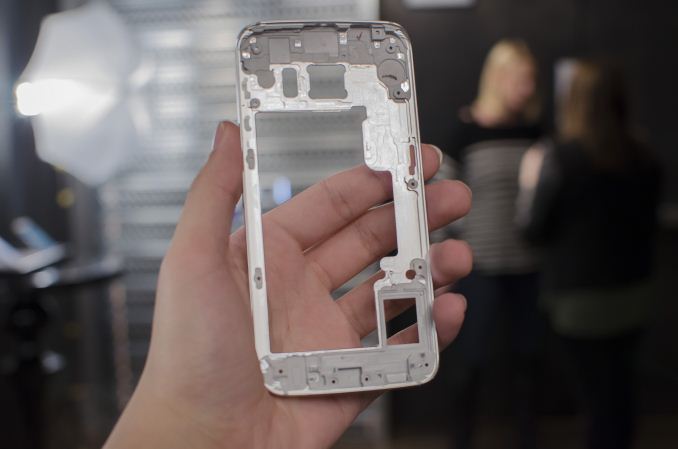


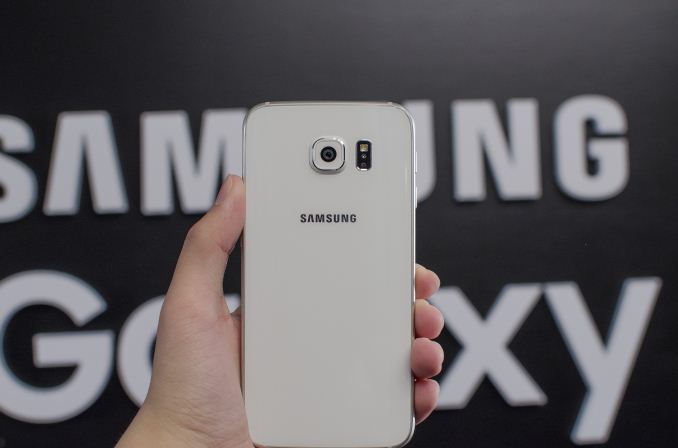
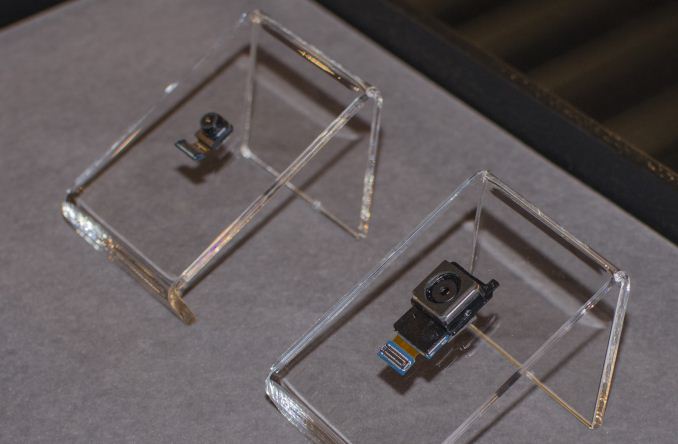
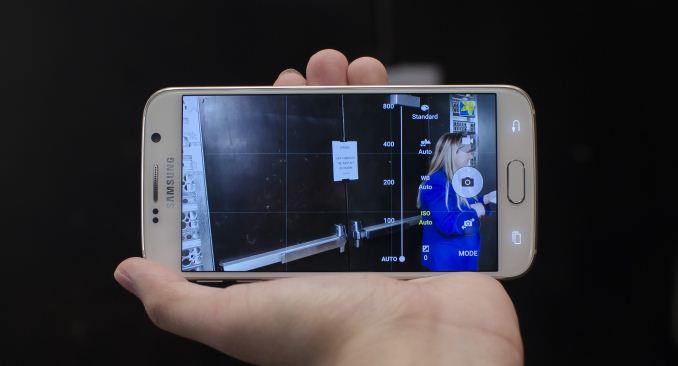
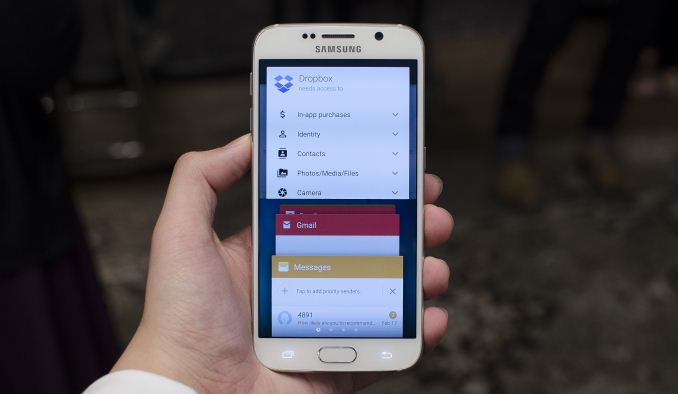
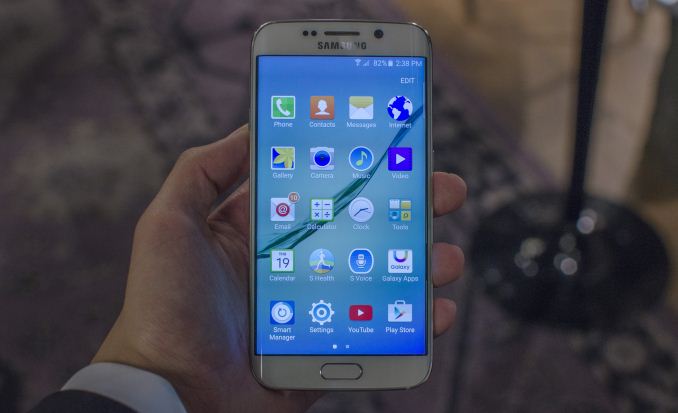
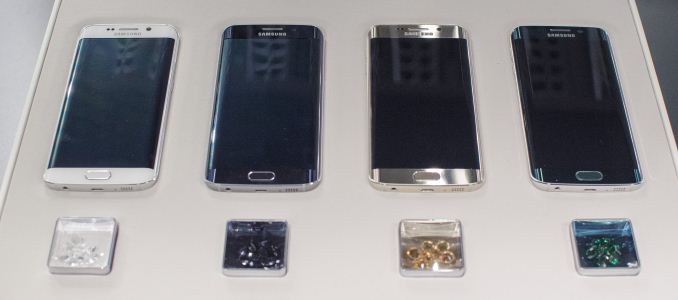
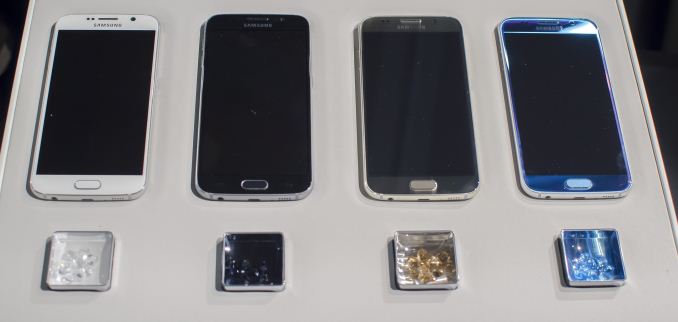

 Quote
Quote





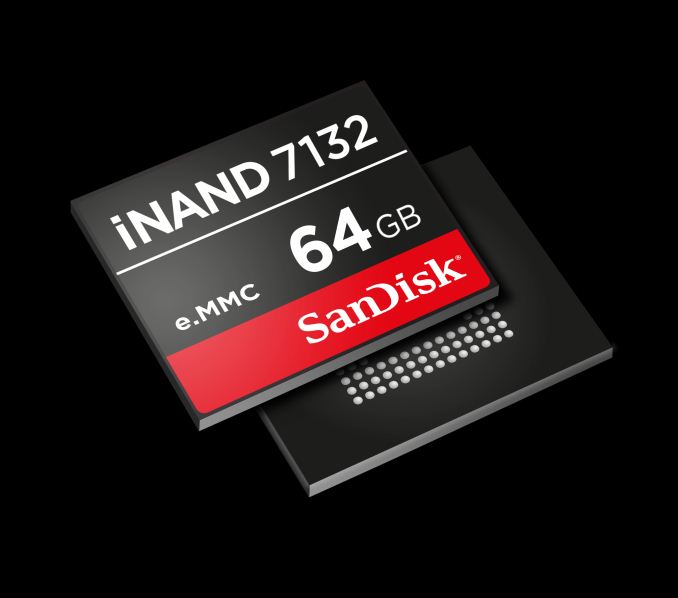
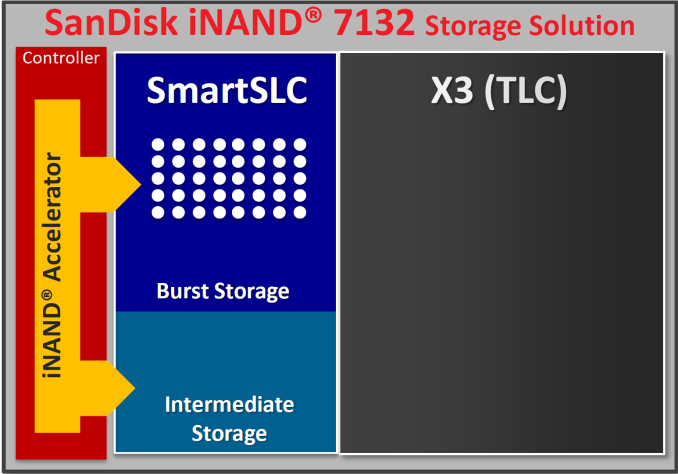
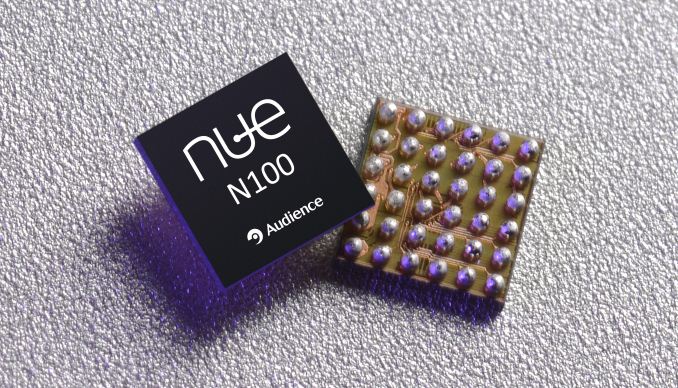

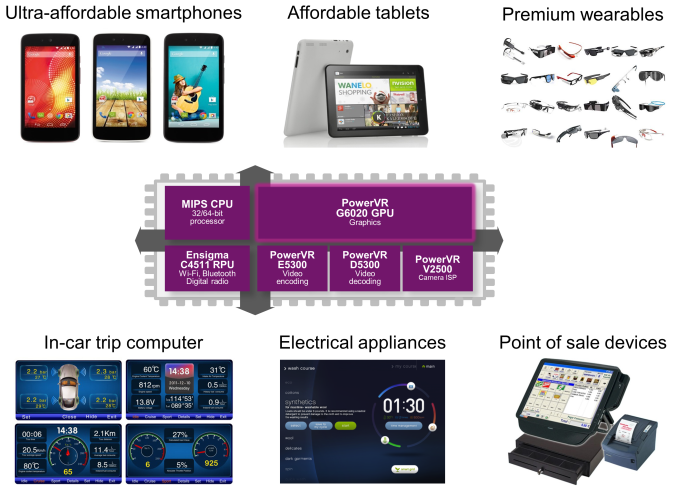
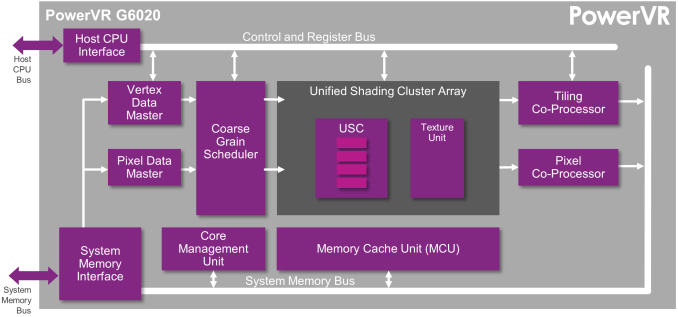
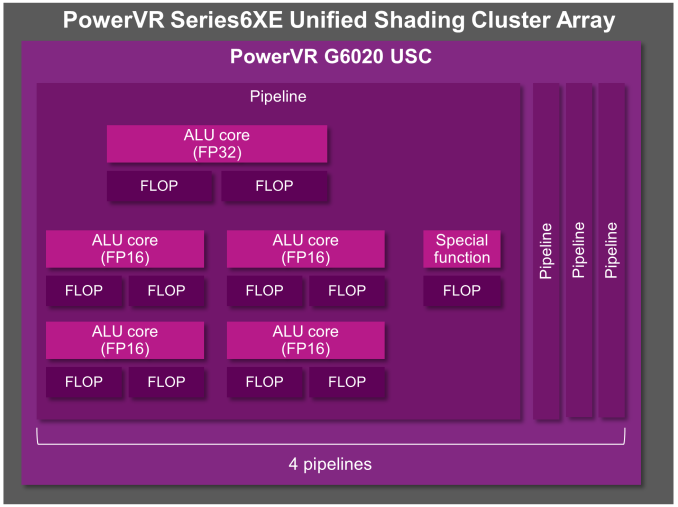


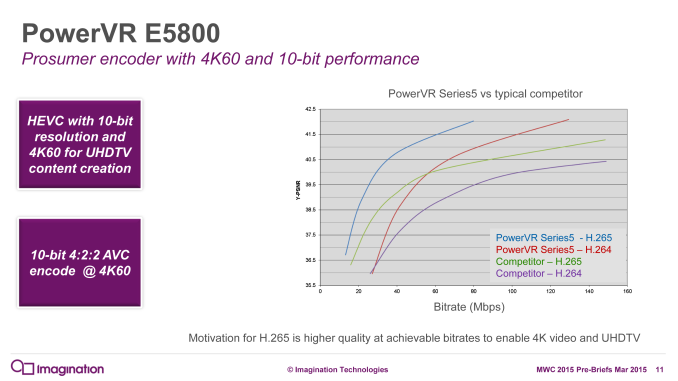

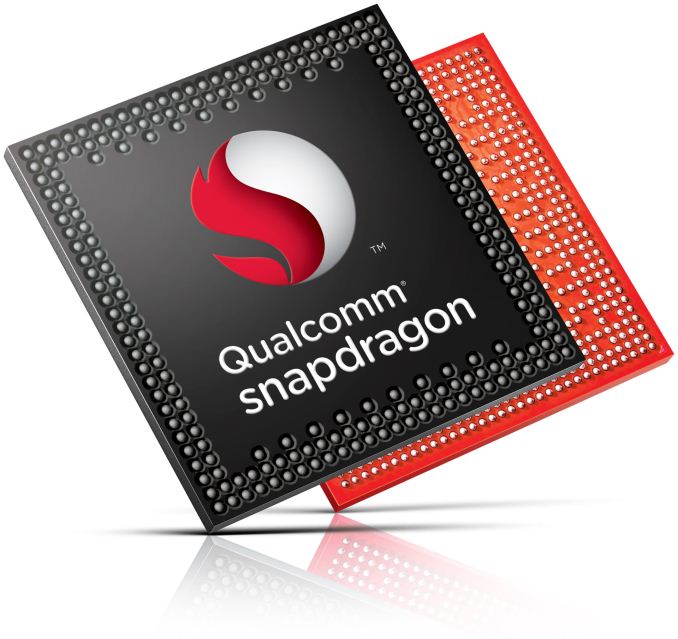

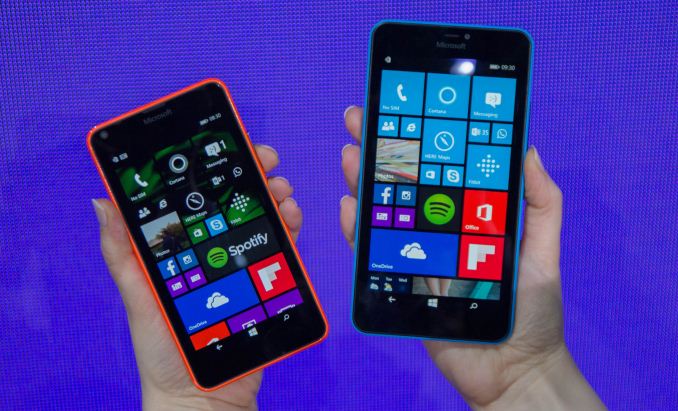
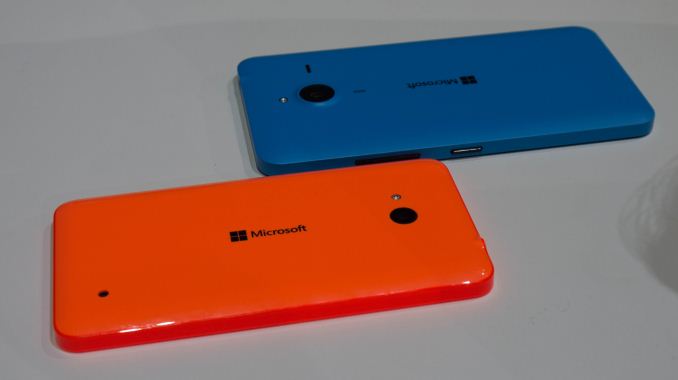
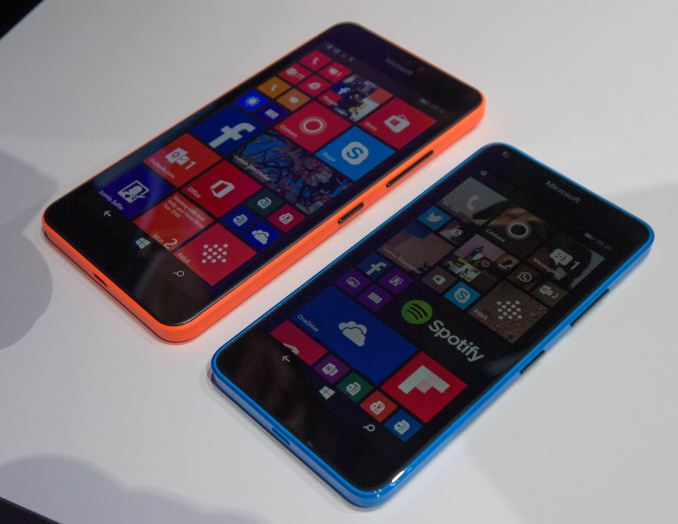
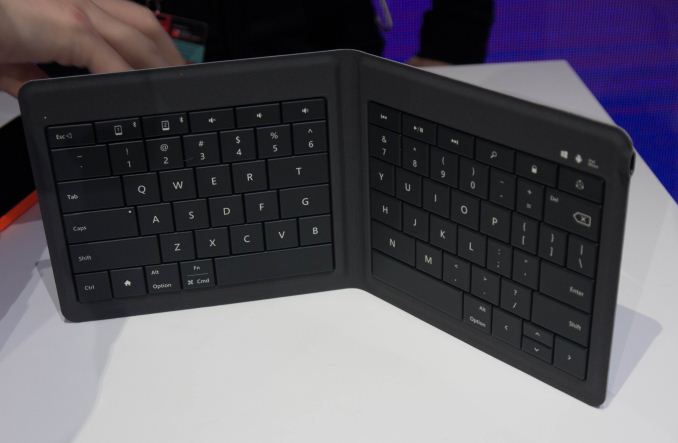






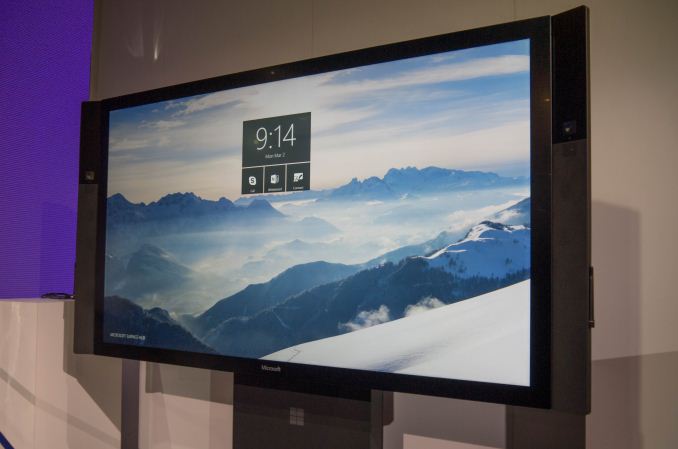
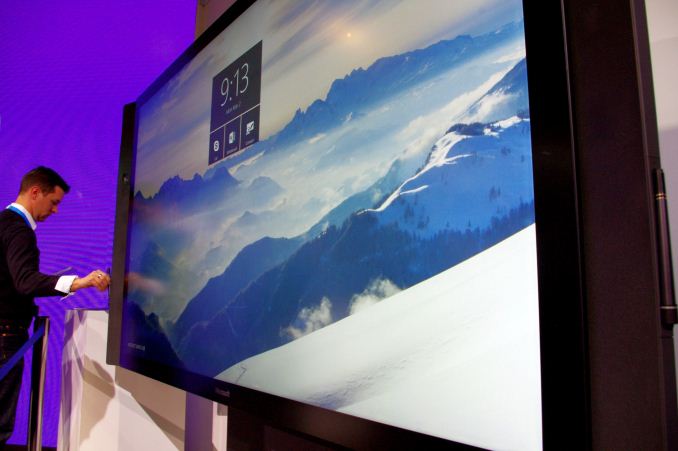

















Bookmarks